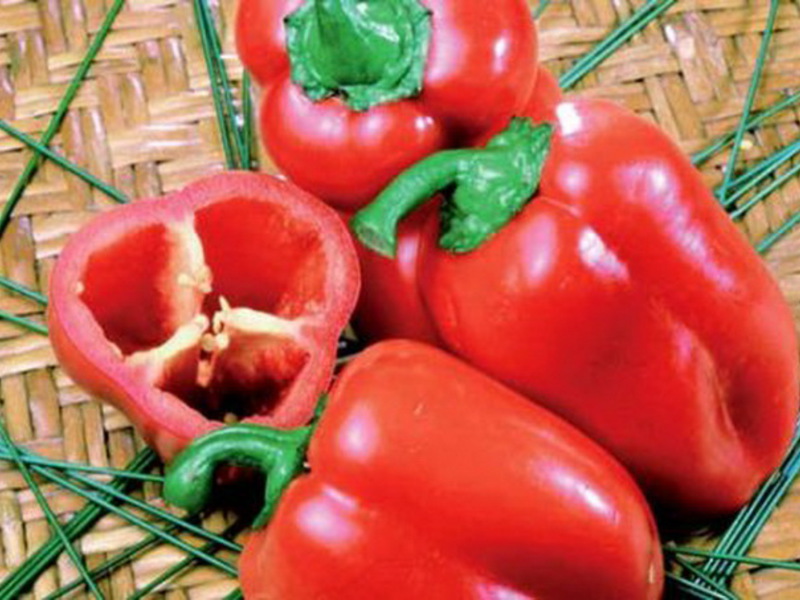 Those summer residents and gardeners who have a small plot or greenhouse, should opt for a very unpretentious variety of Winnie the Pooh. The hybrid was bred in the Rostov region and is perfect for growing both on the open ground and in greenhouse conditions.
Those summer residents and gardeners who have a small plot or greenhouse, should opt for a very unpretentious variety of Winnie the Pooh. The hybrid was bred in the Rostov region and is perfect for growing both on the open ground and in greenhouse conditions.
Content
Grade description
Winnie the Pooh variety belongs to early ripening varieties: usually 100 days elapse between emergence and technical maturity. The height of the bush is very low - only 25 cm, the branches are tightly pressed to the trunk, and the fruits on the bushes grow in bunches. Such a compact form of bushes allows you to grow peppers closely and get a high yield even in the smallest areas.
The fruits are shaped like a cone with a sharp end. The color at the ripening stage is green, but eventually changes color to red. The length of ripe fruits can reach about 10 cm, and weight - 50 g. The pulp is quite fleshy, juicy and sweet, its wall thickness is 6 mm. Therefore, the variety is perfect for heat treatment, pickling and fresh consumption.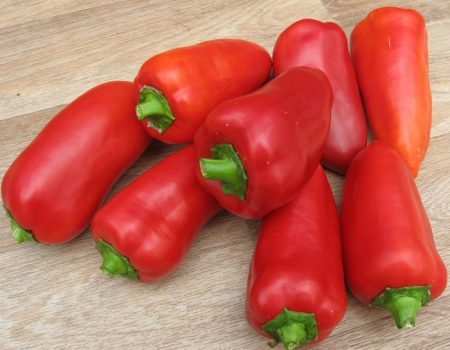
Given the small weight of the fruit, the yield of pepper will be about 5 kg per 1 m2. Harvest perfectly tolerates transportation, is stored for a long time and retains its presentation.
Seed preparation and sowing
Preparing seeds for sowing begins in late February. To do this, they are placed on a damp cloth, which is periodically wetted with water. Within a week, the living seeds swell, and the dead are sifted out. You can speed up the process by keeping the seeds for two days in water at room temperature. Next, place all swollen seeds for an hour in a very weak solution of potassium permanganate and rinse with running water.
Now fertile soil is poured into the prepared containers, watered, and seeds are placed on top. Sprinkle them with dry earth with a layer of 1 cm and cover with a transparent material: film or glass. After the appearance of the first shoots (3 weeks), the film is removed. Tanks should be kept in a bright room on the sunny side.
Growing seedlings
For hatching seedlings, you need to provide a temperature of 22 - 24 ° C. You should also regularly water the sprouts with warm water as the soil dries. When the night air temperature reaches 10 - 13 ° C, young plants must be hardened, leaving them outdoors at night. This procedure will allow them to better transfer the transplant to a permanent place and take root faster.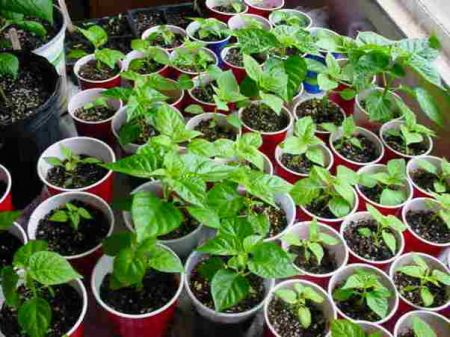
Planting seedlings on beds
Planting seedlings in greenhouses can be carried out in late April - early May, and in open beds in the first decade of June. The soil before planting must be fertilized with humus in advance. Pepper will develop better and get sick less if its predecessors were legumes, cabbage and carrots. You should not plant pepper in one bed after nightshade (tomatoes, potatoes and eggplant).
The shoots are placed at a distance of 60 cm from each other, deepening the stems in the ground to the very leaves, be sure to water it with slightly warm water and cover it with garden film for several days. It is advisable for these purposes to choose a cloudy day, otherwise in the intense sun tender shoots can get burns.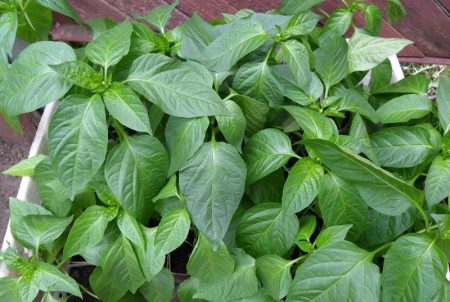
Winnie the Pooh Pepper Care
Rooted seedlings need to be watered from time to time, but they should not be watered abundantly, as crops can be affected by diseases due to overmoistening.
2 times a month, it is necessary to apply mineral fertilizers and top dressing to the soil. You can prepare such a solution: dissolve 1 tablespoon in 10 liters of water. double superphosphate and 1 tsp. urea. Pour a solution of 0.5 l under each bush.
The soil between ridges with planted pepper sometimes needs to be loosened and weeds removed.
When the bush reaches a height of 15 cm, lateral shoots form on it. You need to choose the 2 strongest of them, and pinch the rest. And do it every time with the advent of new shoots. This will significantly increase the yield. You should also regularly inspect the bushes and remove dried leaves.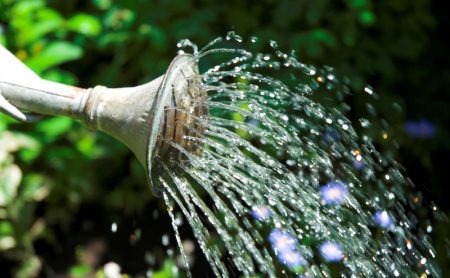
The bed for growing peppers should be well lit by the sun and protected from the winds. Thin and weak shoots are formed from a lack of sun.
Bell pepper disease
The most common ailment of sweet pepper is late blight. It manifests itself as dark spots with a green outline on the leaves, stems and fruits. If you do not immediately take measures to stop the disease, it subsequently leads to rotting of the fruits. Late blight is a common disease of tomatoes, so sweet pepper is not recommended to be planted after tomatoes or next to them. The disease occurs due to a sharp decrease and increase in temperature, as well as high humidity. The disease often affects plants in greenhouses when the temperature is not observed. When the first symptoms of the disease appear, spraying with Bordeaux liquid will help to get rid of late blight.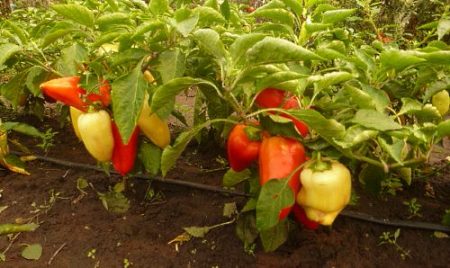
Harvesting bell pepper
Peppers need to be harvested when the fruits are fully ripe. Keeping them on the bush longer is not recommended. Remove pepper from the bush carefully, cutting off with garden shears or a knife along with the stem. The entire crop is usually removed from the bush in 2 or 3 stages as the fruits ripen.
Getting seeds of bell pepper
If during the cultivation of pepper it is also planned to collect seeds, then when harvesting it is necessary to leave several fruits on the third tier from the bottom until the end of summer. At the same time, the shoots and ovaries that appear appear to be removed, as they will take away strength and adversely affect the quality of the seeds. Overripe fruits are removed and placed in a paper bag until completely dry. Then peppers are cut, seeds are taken out and stored in a paper envelope, on which it is necessary to indicate the time of collection and the name of the variety




 Calorie pepper stuffed with meat and rice - BZHU per 100 grams
Calorie pepper stuffed with meat and rice - BZHU per 100 grams Gorky pepper - the best varieties for open ground
Gorky pepper - the best varieties for open ground Hot pepper seeds - the best varieties for open ground and reviews
Hot pepper seeds - the best varieties for open ground and reviews Capsicum tincture for hair - how to use and reviews
Capsicum tincture for hair - how to use and reviews